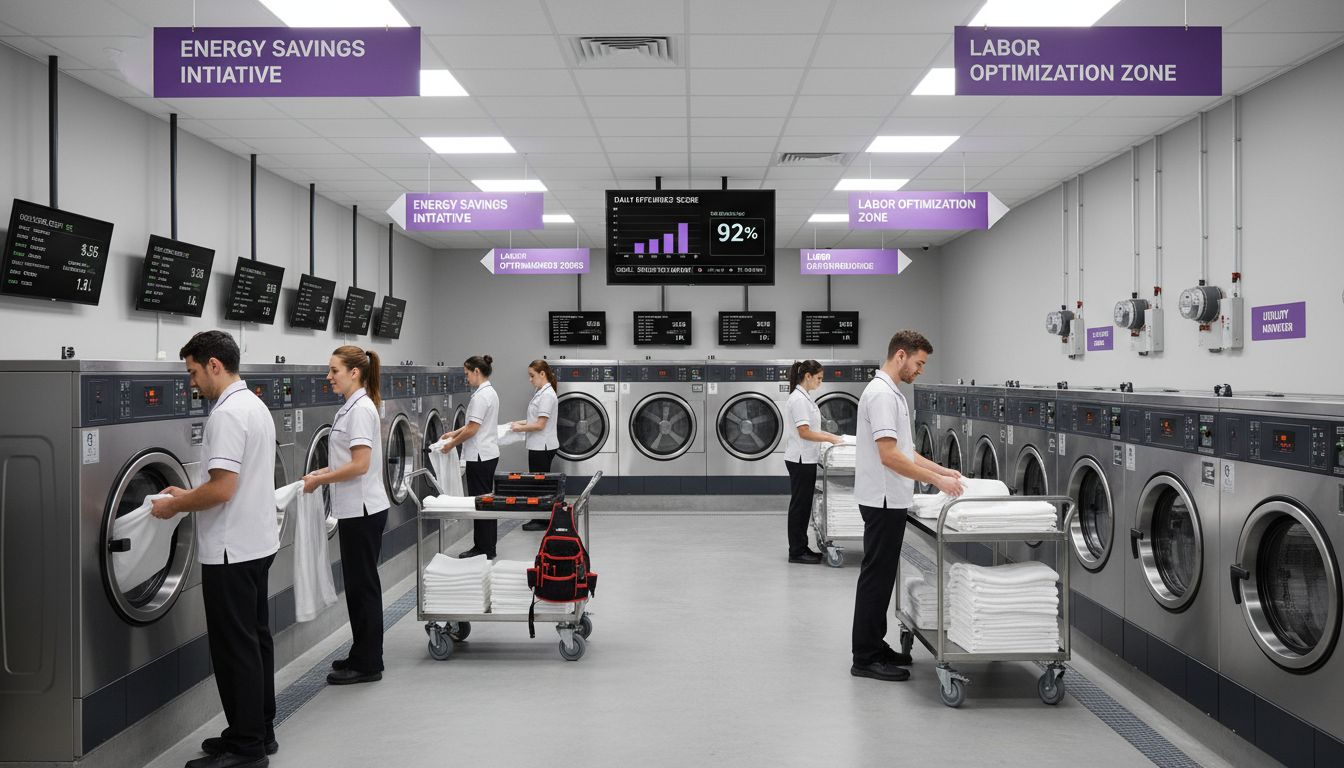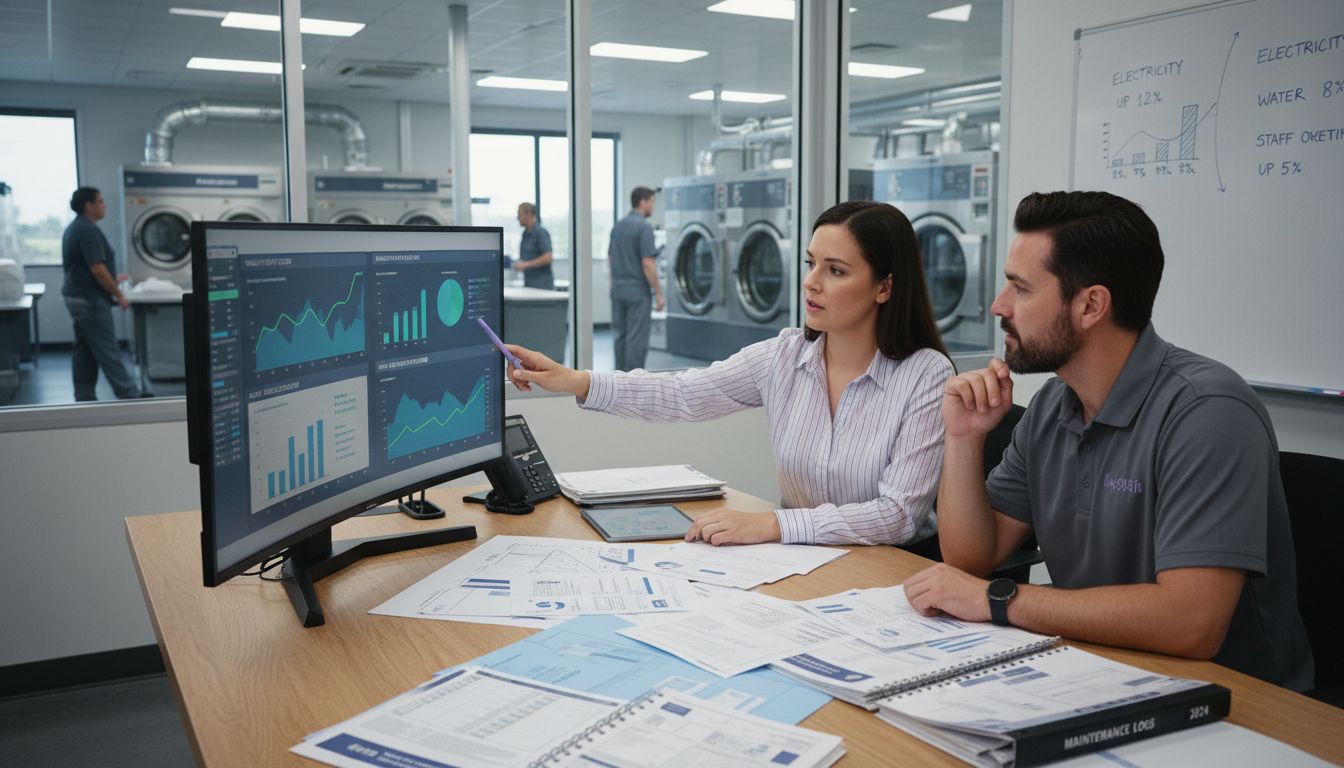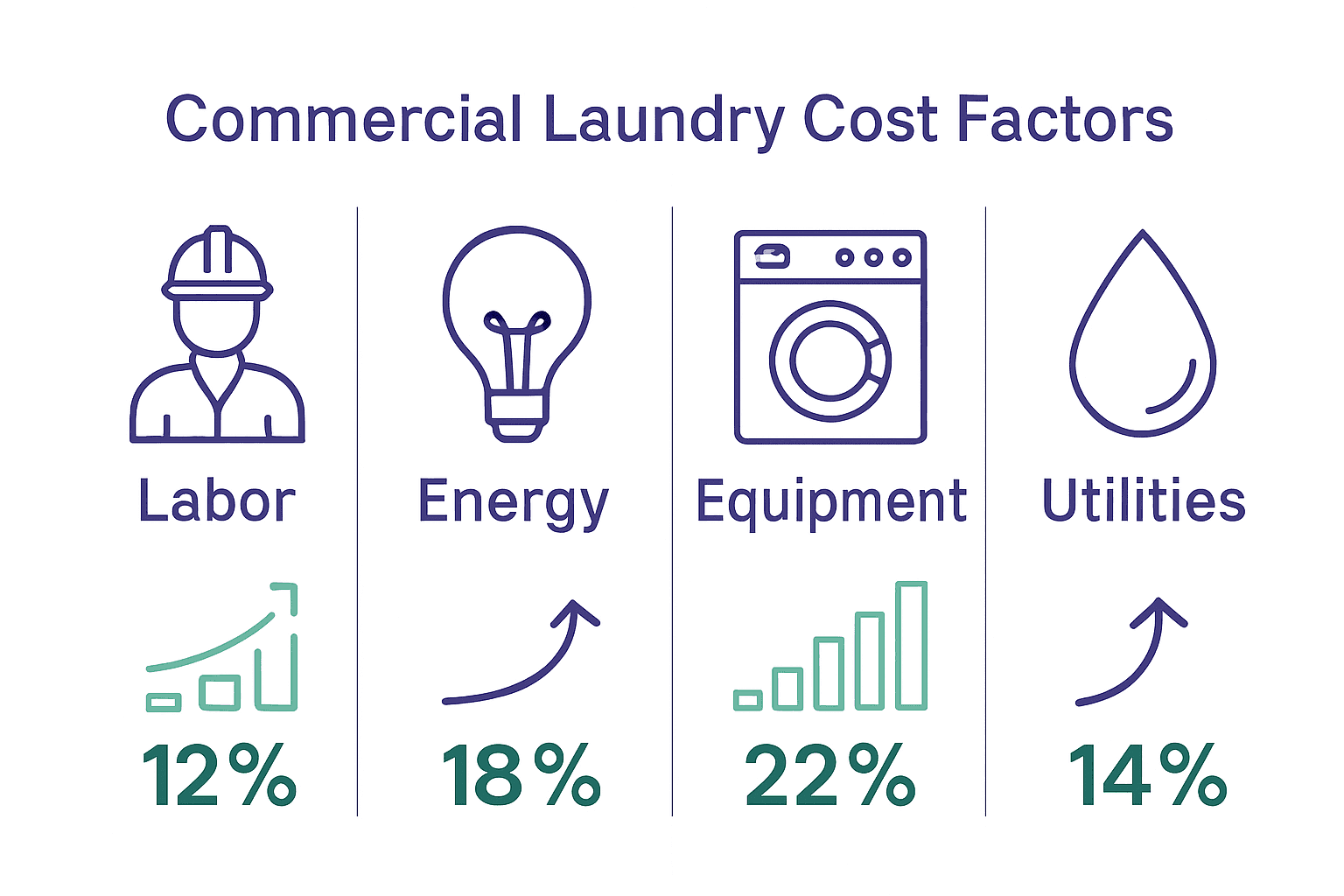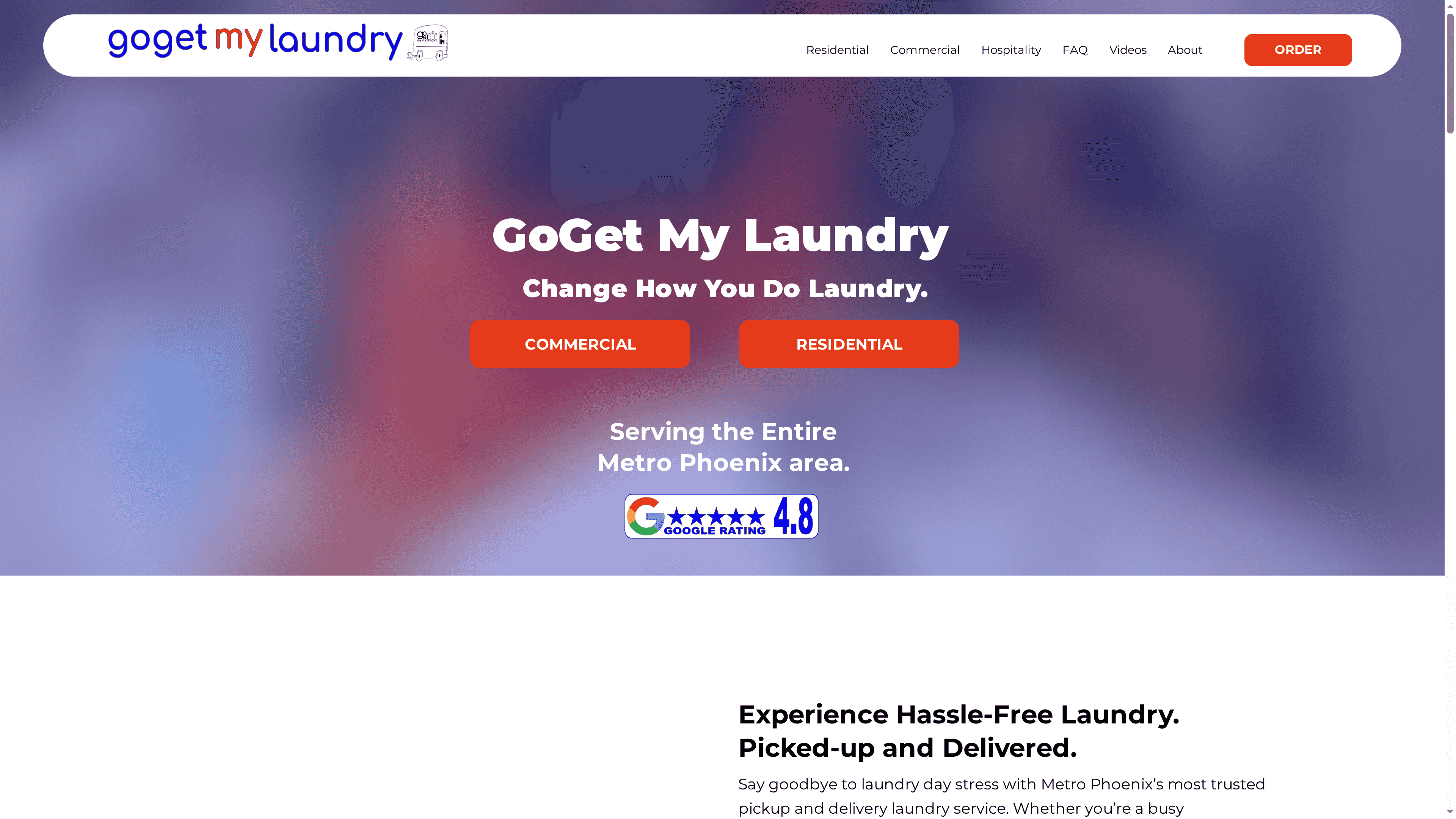Commercial Laundry Cost Factors: Complete Guide
- Sarah Huber
- Nov 11
- 5 min read

Soaring utility prices and rising labor costs are putting serious pressure on commercial laundry businesses. With utility expenses sometimes making up over 50 percent of total operating budgets and labor costs spiking more than 14 percent, these challenges can make or break a company’s bottom line. Understanding every factor behind operational costs is critical for any laundry provider looking to stay efficient and profitable while navigating a rapidly changing market.
Table of Contents
Key Takeaways
Cost Factors | Details |
Labor and Energy Costs | Labor costs have increased by 14.25%, and energy expenses have risen significantly, impacting overall profitability. |
Pricing Structures | Understanding various pricing models like per pound, flat rate, and subscription is crucial for operational sustainability. |
Operational Expenses | Major costs include machinery investments, utilities, and maintenance, requiring careful financial planning. |
Regional Influences | Regional economic conditions, regulatory compliance, and industry-specific demands greatly affect operational costs. |
Defining Commercial Laundry Cost Factors
Commercial laundry services navigate a complex landscape of operational expenses that dramatically impact their pricing and profitability. According to the Textile Services Association, businesses are experiencing unprecedented cost challenges, with key factors including substantial increases across multiple expense categories.
The primary cost drivers in commercial laundry operations can be categorized into several critical components:
Labor Costs: Representing a significant portion of operational expenses, labor costs have surged by 14.25% in recent years
Energy Expenses: With energy costs fluctuating between 100-300% increases, power consumption becomes a major financial consideration
Equipment and Textile Investments: Textile costs have risen by approximately 50%, impacting overall operational budgets
Utility Consumption: Water and wastewater expenses often constitute over 50% of total operating expenses, according to p2infohouse
Understanding these intricate cost factors helps businesses make informed decisions about their laundry service strategies.

Commercial laundry providers must continuously balance technological efficiency, labor management, and resource optimization to remain competitive. Unlocking the World of Laundry: Residential vs. Commercial Laundry Services provides additional insights into navigating these complex operational landscapes.
Key Types of Pricing Structures
Commercial laundry services employ diverse pricing structures designed to accommodate different business needs and operational scales. According to the Government Accountability Office, understanding these pricing models is critical for organizations seeking cost-effective laundry solutions.
The most common commercial laundry pricing structures include:
Per Pound Pricing: Charging a fixed rate based on the total weight of laundry processed
Flat Rate Pricing: A predetermined fee for a specific volume of laundry, regardless of weight
Subscription Models: Regular monthly or weekly services with predetermined pricing tiers
Per Load Pricing: Charging a specific rate for each individual load processed
For smaller businesses and specialized service providers, selecting the right pricing structure can significantly impact financial sustainability.
Decoding the Costs: Understanding Laundry Service Pricing Models offers deeper insights into navigating these complex pricing strategies. As howmuchdoesitcostto highlights, the initial infrastructure and equipment investments play a crucial role in determining appropriate pricing approaches for commercial laundry operations.
Major Operational Expenses and Variables
Commercial laundry operations face a complex web of operational expenses that can significantly impact their financial performance. According to the Textile Services Association, businesses are experiencing unprecedented cost challenges across multiple critical expense categories.
The major operational expenses in commercial laundry services can be broken down into several key variables:
Equipment Investments: The quality of machinery directly influences long-term operational costs
Utility Consumption: Water, electricity, and gas represent substantial ongoing expenses
Labor Costs: Skilled personnel and management contribute significantly to overall operational budgets
Textile and Supply Expenses: Ongoing replacement and maintenance of linens and cleaning supplies

Arrow Machinery emphasizes that seemingly cost-effective equipment choices can lead to higher long-term expenses. Businesses must carefully evaluate their operational strategy, considering factors like equipment efficiency, utility consumption, and maintenance requirements. Investing in high-quality machinery and implementing strategic operational practices can help mitigate escalating costs and improve overall financial sustainability. Laundry Service Cost Per Pound Explained provides additional insights into managing these complex financial considerations.
Regional and Industry-Specific Influences
Commercial laundry services operate within a complex ecosystem heavily influenced by regional economic conditions and industry-specific challenges. Textile Services Association research reveals how dramatically regional factors can impact operational costs, with some areas experiencing unprecedented economic pressures.
The key regional and industry-specific influences on commercial laundry costs include:
Regulatory Compliance: Environmental regulations and local government policies
Geographic Location: Utility rates, labor markets, and regional economic conditions
Industry Sector: Unique requirements for healthcare, hospitality, and other specialized markets
Environmental Considerations: Sustainability demands and associated operational costs
Beyond traditional cost calculations, businesses must now integrate broader considerations into their financial models. Journal of Accounting and Investment highlights the emerging importance of environmental costs, including eco-detergents, potential government fines, and broader societal impacts. Unlocking the World of Laundry: Residential vs. Commercial Laundry Services offers additional context for understanding these complex operational dynamics.
Common Mistakes and Cost Avoidance Tips
Navigating the complex landscape of commercial laundry operations requires strategic planning and awareness of potential financial pitfalls. Arrow Machinery emphasizes that seemingly cost-saving decisions can ultimately lead to significantly higher expenses over time.
Common mistakes that can escalate operational costs include:
Equipment Investment Errors: Choosing low-cost machinery that increases long-term utility and maintenance expenses
Inefficient Utility Management: Overlooking water and energy consumption optimization strategies
Inadequate Maintenance Planning: Neglecting regular equipment servicing and preventative maintenance
Poor Pricing Strategy: Failing to accurately account for all operational expenses in service pricing
How Much Does It Cost To highlights the importance of comprehensive financial planning, particularly for businesses just entering the commercial laundry market. Successful operators must develop a holistic approach that considers not just immediate expenses, but long-term operational sustainability. Decoding the Costs: Understanding Laundry Service Pricing Models provides additional strategies for avoiding common financial missteps in the commercial laundry industry.
Simplify Your Commercial Laundry Challenges with Expert Solutions
Understanding the rising cost factors in commercial laundry such as labor, energy, and equipment investments can feel overwhelming. The article highlights real issues like fluctuating utility expenses and pricing complexities that many businesses face. If balancing these operational costs while maintaining quality service is your goal, you are not alone.
At GoGet My Laundry, we specialize in providing efficient, reliable commercial laundry services tailored to reduce your financial and logistical burdens. Our commercial extractor washers and flexible scheduling help control energy use and labor costs without compromising care. To explore how customized services and advanced technology can improve your operations, check out how we handle custom ordering platforms, and learn more about our commercial service benefits.
Ready to take control of rising laundry expenses and streamline your business workflow?

Discover smarter solutions today by visiting GoGet My Laundry and experience the convenience of specialized commercial laundry services designed to fit your unique needs. Act now to start saving time and managing costs effectively.
Frequently Asked Questions
What are the primary cost factors affecting commercial laundry services?
The main cost factors include labor costs, energy expenses, equipment and textile investments, and utility consumption such as water and wastewater.
How do different pricing structures in commercial laundry work?
Common pricing structures include per pound pricing, flat rate pricing, subscription models, and per load pricing, allowing businesses to choose based on their specific needs.
What common mistakes should businesses avoid to manage laundry costs effectively?
Businesses should avoid errors in equipment investment, inefficient utility management, inadequate maintenance planning, and poor pricing strategy to keep operational costs in check.
How does geographic location impact commercial laundry costs?
Geographic location influences utility rates, labor markets, and local economic conditions, which can lead to varying operational costs in commercial laundry services.
Recommended

Comments